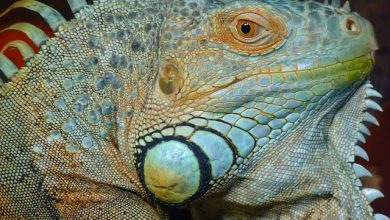What’s the Deal with Fish Food?

Photo courtesy of Juan Carlos Palau DÃaz
If youâre new to tropical fishkeeping, you may feel a bit clueless about how to feed them. After all, not getting the right kind or quantity of food can be pretty detrimental to any animalâs health.
Hereâs a quick guide on what fish eat, how much they need, and how often you should feed them.
What to feed
Whatever type of fish you have, you can probably find some kind of prepackaged wafer, pellet, or flake food for it. That being said, many fish enjoy getting other varieties of food as well, whether that is live food, gel food, or frozen food.
The main thing you need to know when selecting foods is whether your fish is an herbivore, omnivore, or carnivore.
Herbivores do well in tanks with live plants where they can nibble all day. You can check out this article I wrote previously about live plants that are easy to grow in a freshwater aquarium. You can also add blanched vegetables, such as peas, spinach, and zucchini to the tank for feedings.
For carnivores, things like brine shrimp, mealworms, crickets, and snails make good food choices. Select foods that are appropriately sized for your fish to eat.
Omnivores can eat any of the above foods, but generally they require more plant foods than protein foods.
How much to feed
Whatâs the big deal about quantity? Itâs better to have too much than too little, right? Not really.
The truth is that uneaten food left in the aquarium can clog filters and break down, leading to toxins in the tank. You want to make sure that the majority of the food going in gets eaten.
Thatâs why if youâre not entirely sure how much your fish need, itâs better to err on the side of smaller portions. You can always give them another meal later if they gobble it up quickly.
The ideal amount of food is however much they can eat in five minutes. If thereâs food left after that, itâs too much, even if the fish end up eating it. Remember that fish can easily eat more than they need.
If the fish do leave behind pieces of food, you should remove it so it doesnât decompose in the tank and alter the water chemistry.
How often to feed
The problem with figuring out how often to feed your fish is that fish learn quickly who feeds them, and they tend to eat whenever a food source appears. That means your fish may engage in behavior that suggests they expect food from you, but that doesnât necessarily mean they are actually hungry and need to be fed.
Rest assured that if you miss a feeding, your fish will be perfectly fine. In nature, fish can go a few days without eating when food sources are scarce.
That being said, itâs better to feed smaller meals every day than large meals every other day. Depending on the age and species, you may even need to feed fish twice a day, and some young fish can eat three small meals a day while they are growing.
As with most pets, itâs best to check the exact requirements of the specific species you have.
If you keep small herbivorous or omnivorous fish, like guppies, mollies, and goldfish, it is better to feed them a few small meals per day rather than only one because herbivores tend to graze all day in nature. One way to keep them healthy is to provide live plants in their aquarium. This allows them to engage in their natural grazing behaviors, and youâll only need to feed them additional food once or twice a day.
For tips on specific feeding requirements for different species, talk to our knowledgeable team at The Tye-Dyed Iguana in Fairview Heights.



